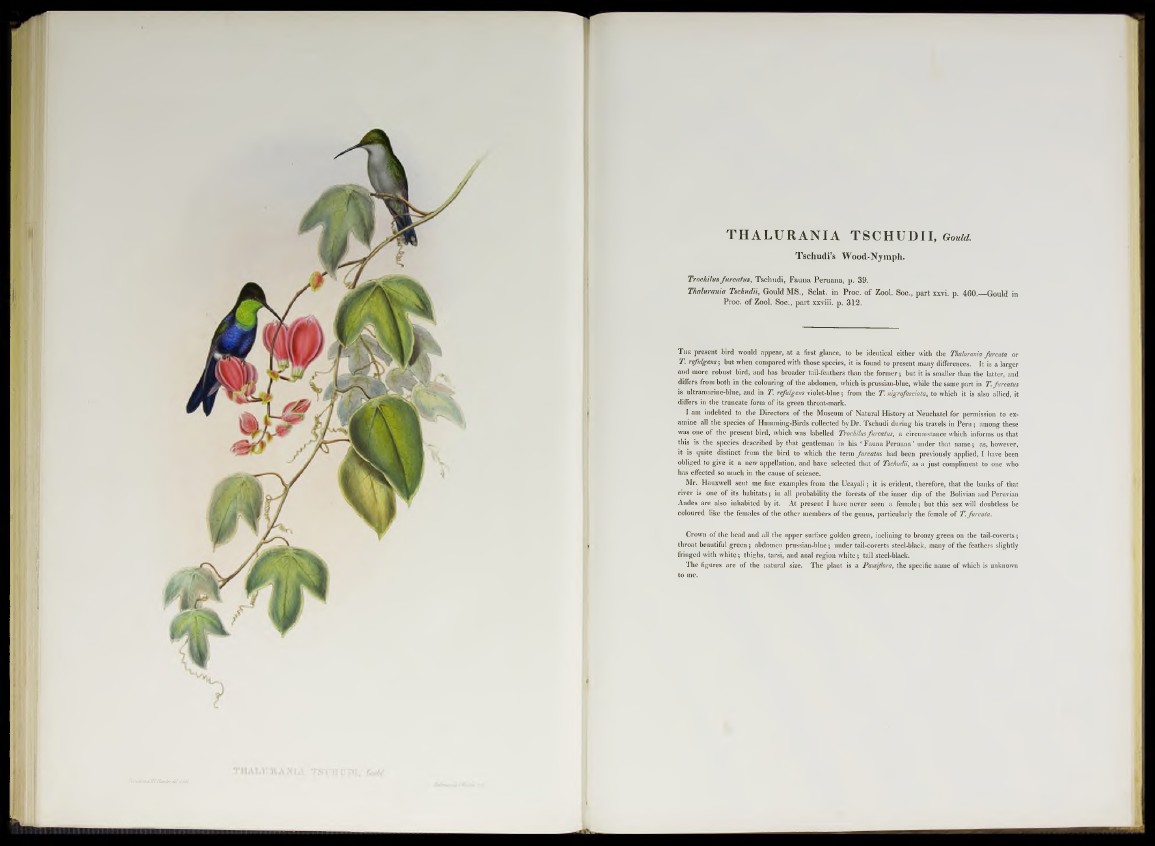
JG ffulclanJJlC .Rünltr'tltidltfA.
THALURANIA TSCHUDI I , Gould.
Tschudi’s Wood-Nymph.
Trochilusfurcatu8, Tschudi, Fauna Peruana, p. 39.
Thalurania Tschudii, Gould MS., Sclat. in Proc. of Zool. Soc., part xxvi. p. 460. Gould in
Proc. of Zool. Soc., part xxviii. p. 312.
The present bird would appear, at a first glance, to be identical either with the Thalurania furcata or
T. refulgens; but when compared with tbose species, it is found to present many differences. It is a larger
and more robust bird, and has broader tail-feathers than the former; but it.is smaller than the latter, and
differs from both in the colouring of the abdomen, which is prussian-blue, while the same part in T. furcatus
is ultramarine-blue, and in T. refulgens violet-blue; from the T. nigrofasciata, to which it is also allied, it
differs in the truncate form of its green throat-mark.
I am indebted to the Directors of the Museum of Natural History at Neuchatel for permission to ex-
amiue all the species of Humming-Birds collected byDr. Tschudi during his travels in Peru; among these
was one of the present bird, which was labelled Trochilus furcatus, a circumstance which informs us that
this is the species déscribed by that gentleman in his ‘ Fauna Peruana ’ under that name; as, however,
it is quite distinct from the bird to which the term furcatus had heen previously applied, I have been
obliged to give it a new appellation, and have selected that of Tschudii, as a just compliment to one who
has effected so much in the cause of science.
Mr. Hauxwell sent me fine examples from the Ucayali; it is evident, therefore, that the banks of that
river is one of its hahitats; in all probability the forests of the inner dip of the Bolivian and Peruvian
Andes are also inhabited by it. At present I have never seen a female; but this sex will doubtless be
coloured like the females of the other members of the genus, particularly the female of T. furcata.
Crown of the head and all the upper surface golden green, inclining to bronzy green on the tail-coverts;
throat beautiful green; abdomen prussian-blue; under tail-coverts steel-black, many of the feathers slightly
fringed with white; thighs, tarsi, and anal region white; tail steel-black.
The figures are of the natural size. The plant is a Passiflora, the specific name of which is unknown
to me.